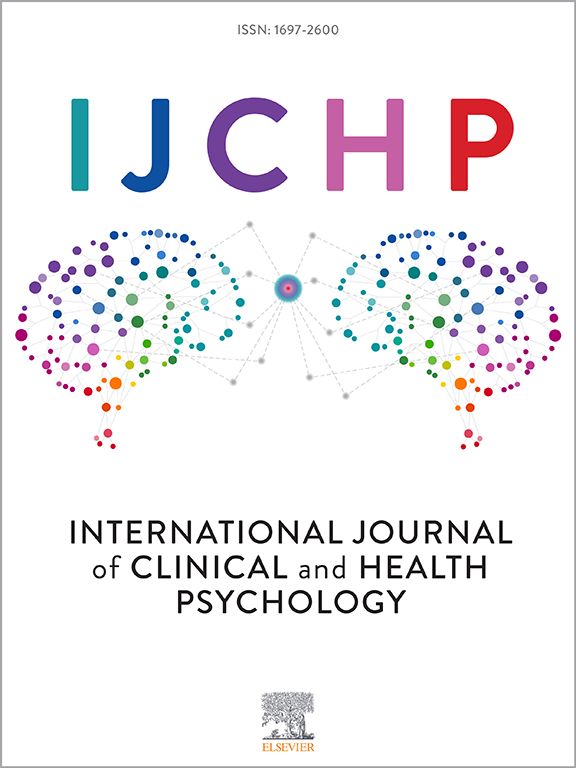我们应该担心如何衡量忧虑吗?来自更新版的意大利宾夕法尼亚州立大学忧虑问卷的见解
IF 4.4
1区 心理学
Q1 PSYCHOLOGY, CLINICAL
International Journal of Clinical and Health Psychology
Pub Date : 2025-04-01
DOI:10.1016/j.ijchp.2025.100579
引用次数: 0
摘要
研究表明,自我报告的担忧有所增加,这凸显了对更新心理测量工具的需求。宾夕法尼亚州立大学忧虑问卷(PSWQ)评估过度忧虑,对于是否只使用11个积极措辞的项目存在争议。本研究旨在阐明PSWQ的因素结构和心理测量特征,并探讨2010年代和2020年代两个不同意大利社区样本的担忧特征。方法20世纪20年代共纳入674名参与者(女性44.5%;Mage = 29.44±13.20),而2010年代的样本共有411人,其中女性占61.6%;法师= 36.64±13.73)。本研究采用经典检验理论(CTT)的方法比较不同的PSWQ因子结构,评估最佳拟合模型的信度和效度,并评估2020年样本中不同性别的测量不变性(MI)。项目反应理论(IRT)被应用于提炼和确认最适合的因素结构,并在样本中比较项目和个人的位置。结果11项单因素模型拟合效果最佳,具有良好的信度和并发效度。支持跨性别的MI。IRT分析表明,对于2010年的样本来说,项目稍微困难一些。结论PSWQ-11量表是一种有效、可靠的意大利社区焦虑评估工具。研究结果表明,社会问题以及社会人口特征可能会影响不同历史背景下担忧特征的差异。本文章由计算机程序翻译,如有差异,请以英文原文为准。
Should we worry about how we measure worry? Insights from an updated version of the Italian Penn State Worry Questionnaire
Background
Research indicates a rise in self-reported worry, highlighting the need for updated psychometric tools. The Penn State Worry Questionnaire (PSWQ) assesses excessive worry and there is debate over whether only its 11 positively worded items should be used. This study aimed to clarify the factor structure and psychometric properties of the PSWQ and to explore worry features in two diverse Italian community samples from the 2010s and 2020s.
Methods
The 2020s sample included 674 participants (44.5 % female; Mage = 29.44 ± 13.20), while the 2010s sample comprised 411 individuals (61.6 % female; Mage = 36.64 ± 13.73). Methods from Classical Test Theory (CTT) were used to compare alternative PSWQ factor structures, assess the best-fitting model’s reliability and validity, and evaluate measurement invariance (MI) across sexes in the 2020s sample. Item Response Theory (IRT) was applied to refine and confirm the best-fitting factor structure and to compare item and individual locations across samples.
Results
The 11-item one-factor model was the best fit and it showed excellent reliability and concurrent validity. MI across sexes was supported. IRT analyses suggested that items were slightly more difficult for the 2010s sample.
Conclusions
The PSWQ-11 is a valid and reliable tool for assessing worry in the Italian community. The findings suggest that societal issues as well as socio-demographic characteristics may contribute shaping differences in worry features across diverse historical contexts.
求助全文
通过发布文献求助,成功后即可免费获取论文全文。
去求助
来源期刊

International Journal of Clinical and Health Psychology
PSYCHOLOGY, CLINICAL-
CiteScore
10.70
自引率
5.70%
发文量
38
审稿时长
33 days
期刊介绍:
The International Journal of Clinical and Health Psychology is dedicated to publishing manuscripts with a strong emphasis on both basic and applied research, encompassing experimental, clinical, and theoretical contributions that advance the fields of Clinical and Health Psychology. With a focus on four core domains—clinical psychology and psychotherapy, psychopathology, health psychology, and clinical neurosciences—the IJCHP seeks to provide a comprehensive platform for scholarly discourse and innovation. The journal accepts Original Articles (empirical studies) and Review Articles. Manuscripts submitted to IJCHP should be original and not previously published or under consideration elsewhere. All signing authors must unanimously agree on the submitted version of the manuscript. By submitting their work, authors agree to transfer their copyrights to the Journal for the duration of the editorial process.
 求助内容:
求助内容: 应助结果提醒方式:
应助结果提醒方式:


